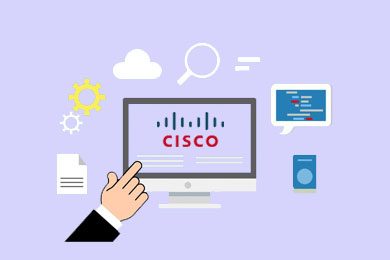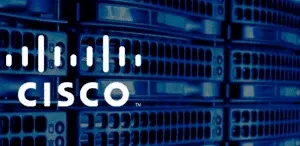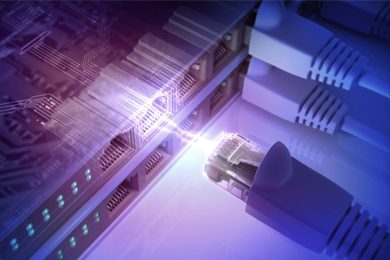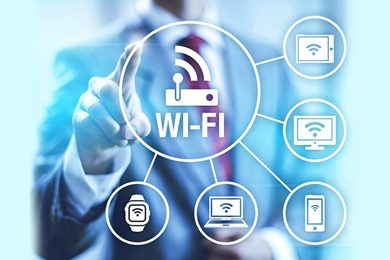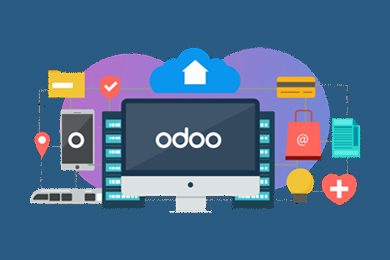This plan includes
- Limited free courses access
- Play & Pause Course Videos
- Video Recorded Lectures
- Learn on Mobile/PC/Tablet
- Quizzes and Real Projects
- Lifetime Course Certificate
- Email & Chat Support
What you'll learn?
- Once you complete this course, you will be prepared and ready to pass Cisco's new CCNA R/S 200-125 certification exam.
Course Overview
This course is for Cisco's newest certification, the CCNA R/S 200-125, that became effective on August 21st, 2016.
Cisco certifications do have an expiration date and they need to be renewed every couple of years.
The course was produced in a very effective manner where you, the student, would feel as if you are in a classroom setting and the instructor is speaking directly to YOU.
Following Laz's instructions and using his recommendations for other resources like books, etc., has proven to be the key to lead his students to achieve success in passing the certification exam.
Laz's style of teaching, (and there is a method to his madness), is very laid back and somewhat unorthodox, as you will see for yourself.
However, this is to make the topics covered more digestible and easier for anyone to understand. Even if you are totally new to Networking.
So, whether you are a novice, need to pass the CCNA or just need a refresher for your current job, this course has everything you need.
Don't doubt the Instructor with the proven record, but rather embrace his knowledge and his experience when it comes to this; after all...his reputation depends on your success!
You will acquire the knowledge in this course to make it transferable to real world use, as a Cisco and/or IT Professional.
DISCLAIMER: Please note that the simulators/emulators used in this course are not part of the course. It is the students responsibility to have these to practice with. The Cisco Packet Tracer & VIRAL (Virtual Internet Routing Lab) are Cisco proprietary software and can only be obtained through Cisco. But students have more options than those. They can create their own lab with real equipment, get BOSON or GNS3. It is up to each student to obtain the simulator/emulator of their choice to study along with this course.
BOOKS USED IN THE COURSE: CCNA R/S by Cisco Press, Sybex CCNA Study Guide by Todd Lammle & The Only IP Book You Will Ever Need!, by Lazaro J. Diaz - These are ALL available on AMAZON
This course will give you an in-depth understanding of networking, using routers and switches and their various configurations and connections. You will learn how to configure; default, static and dynamic routing. You will comprehend how to manipulate each of the routing protocols attributes to meet the requirements of the network.
This course will also prepare you in Layer 2 technology and its various configurations, such as; VLAN’s, VTP, STP, PortFast, EtherChannel, Port-Security, Inter-VLAN communication & Trunking; plus the newest requirements needed for CISCO's NEW CCNA (200-125) certification exam as well.
You will also acquire the knowledge needed to secure the routers through the use of Access-list, configuring the different types of NAT & will be able to manage the router’s components.
As students, you will also be able to thoroughly grasp the concepts of both Internet Protocols; IPv4 & IPv6. These are KEY to any Network!
Please keep in mind that Laz has his own book called "The Only IP Book You Will Ever Need!" that will further help those that need a more in-depth understanding of IPv4 & IPv6.
Also covered in this course is Wide Area Network Protocols like HDLC, PPP, Frame Relay, HSRP, BGP, MPLS, NHRP, MGRE among other things.
You will also learn how to create redundancy in networks through the use of Redundancy Protocols such as HSRP which is just as important. Also, within the WAN, you, the student, will also learn how to create VPN’s and GRE Tunnels among other things that are crucial in passing the new CCNA.
Great achievements and success is at your grasp!
All you need to do is let this course guide you through it.
The possibilities are going to be endless once you take this CCNA certification course.
Pre-requisites
- CCNA R/S by Cisco Press, Sybex CCNA Study Guide by Todd Lammle
Target Audience
- This course was prepared for those that need to pass the CCNA R/S 200-125 certification exam
- Students that are currently in College or University for Networking of Computer Science degrees
- Anyone that wants to advance their career into Networking
Curriculum 153 Lectures 16:30:13
Section 1 : Introduction to the CCNA (200-125) The Complete Course
Section 2 : Introduction to TCP/IP Networking
- Lecture 1 :
- Introduction to TCP/IP Networking
- Lecture 2 :
- Perspectives on Networking
- Lecture 3 :
- The Application Layer of the TCP/IP Model
- Lecture 4 :
- The Transport Layer of the TCP/IP Model
- Lecture 5 :
- The Network Layer of the TCP/IP Model
- Lecture 6 :
- The Link and Physical Layer of the TCP/IP Model
- Lecture 7 :
- Summary of Section
Section 3 : The Breakdown to the OSI Model
- Lecture 1 :
- The OSI Model
- Lecture 2 :
- Comparing the OSI Model with the TCP/IP Model
- Lecture 3 :
- OSI Layers and their functions
- Lecture 4 :
- OSI Layering Concepts and benefits
- Lecture 5 :
- Summary of Section
Section 4 : A Look at the Cisco Models
- Lecture 1 :
- Cisco Three Layer Model
- Lecture 2 :
- Cisco Collapsed Architecture
- Lecture 3 :
- Summary of Section
Section 5 : An Introduction to Ethernet LANs
- Lecture 1 :
- An Overview of LANs
- Lecture 2 :
- Common Small Office Home Office LAN
- Lecture 3 :
- Common Enterprise LAN
- Lecture 4 :
- Ethernet Cabling Standards
- Lecture 5 :
- Summary of Section
Section 6 : Nodes used on Ethernet LANs
- Lecture 1 :
- Devices used on Ethernet Networks
- Lecture 2 :
- Summary of Section
Section 7 : Introduction to IPv4 Addressing
- Lecture 1 :
- Introduction to IPv4 Addressing
- Lecture 2 :
- Format and Classes of an IPv4 Address
- Lecture 3 :
- Private IP Addressing
- Lecture 4 :
- Summary of Section
Section 8 : Class-Full Subnetting in IPv4
- Lecture 1 :
- Class-Full Subnetting in IPv4
- Lecture 2 :
- Subnetting a Class "C" Address
- Lecture 3 :
- Subnetting a Class "B" Address
- Lecture 4 :
- Subnetting a Class "A" Address
- Lecture 5 :
- Summary of Section
Section 9 : VLSM
- Lecture 1 :
- Variable Length Subnet Masking
- Lecture 2 :
- VLSM Breakdown
- Lecture 3 :
- Creating a VLSM Network
- Lecture 4 :
- Summary of Section
Section 10 : Route Summarization
- Lecture 1 :
- Route Summarization
- Lecture 2 :
- Summarization Breakdown
- Lecture 3 :
- Assigning the summary Address
- Lecture 4 :
- Summary of Section
Section 11 : Configuration within the CLI
- Lecture 1 :
- Introduction to Cisco's CLI
- Lecture 2 :
- Navigation through the CLI
- Lecture 3 :
- Cisco Router Components
- Lecture 4 :
- Router Boot Sequence
- Lecture 5 :
- Password Recovery Procedure
- Lecture 6 :
- Router Administrative Commands
- Lecture 7 :
- Router Interface Commands
- Lecture 8 :
- Summary of Section
Section 12 : All About Routing
- Lecture 1 :
- Routing Packets in your network
- Lecture 2 :
- Default Routing
- Lecture 3 :
- Static Routing
- Lecture 4 :
- Dynamic Routing
- Lecture 5 :
- Configuring RIPv2
- Lecture 6 :
- Passive-Interface Interface
- Lecture 7 :
- Configuring the Passive-Interface Command
- Lecture 8 :
- RIPv2 Default Routes
- Lecture 9 :
- Configuring RIPv2 Default Routes
- Lecture 10 :
- Summary of Section
Section 13 : The EIGRP Routing Protocol
- Lecture 1 :
- EIGPR Routing Protocol
- Lecture 2 :
- Basic Configuration of EIGRP
- Lecture 3 :
- The EIGRP Topology Table
- Lecture 4 :
- Successor and feasible Successor Routes
- Lecture 5 :
- The EIGRP Neighbor Table
- Lecture 6 :
- Using Wildcards to Configure EIGRP
- Lecture 7 :
- Tweaking the Bandwidth in EIGRP
- Lecture 8 :
- Load balancing with EIGRP
- Lecture 9 :
- Summary of Section
Section 14 : All About OSPF
- Lecture 1 :
- All About OSPF
- Lecture 2 :
- OSPF Basic Lab
- Lecture 3 :
- Designated and Backup Router lab
- Lecture 4 :
- Multi-Area OSPF Lab
- Lecture 5 :
- OSPF Authentication Lab
- Lecture 6 :
- Summary of Section
Section 15 : All about Switching
- Lecture 1 :
- LAN Switching
- Lecture 2 :
- Configuring Common Commands on a Switch
- Lecture 3 :
- The Spanning-Tree Protocol
- Lecture 4 :
- Spanning-Tree Protocol Election Process
- Lecture 5 :
- Manipulation of STP
- Lecture 6 :
- Summary of Section
Section 16 : All about VLANs
- Lecture 1 :
- Using VLANs on our Network
- Lecture 2 :
- VLAN Configuration
- Lecture 3 :
- Using the Virtual Trunking Protocol
- Lecture 4 :
- Trunking Ports on L2 Switches
- Lecture 5 :
- Securing ports on a Switch
- Lecture 6 :
- Summary of Section
Section 17 : Welcome to Inter-VLAN Routing and EtherChannel
- Lecture 1 :
- Inter-VLAN Routing
- Lecture 2 :
- Ether-Channel
- Lecture 3 :
- EtherChannel Configuration
- Lecture 4 :
- Summary of Section
Section 18 : Welcome to IPv6
- Lecture 1 :
- The In's and outs of IPv6
- Lecture 2 :
- Assigning IPv6 Addresses to an interface
- Lecture 3 :
- Static Routing in IPv6
- Lecture 4 :
- RIPng Configuration
- Lecture 5 :
- EIGRPv6 Configuration
- Lecture 6 :
- OSPFv3 Configuration
- Lecture 7 :
- Dual Stack
- Lecture 8 :
- Subnetting in IPv6
- Lecture 9 :
- Summary of Section
Section 19 : Welcome to Access-List
- Lecture 1 :
- Unraveling Access List
- Lecture 2 :
- Standard ACL Configuration
- Lecture 3 :
- Standard ACLs for Telnet
- Lecture 4 :
- Extended ACL Configuration
- Lecture 5 :
- Named ACL Configuration
- Lecture 6 :
- Using the REMARK Command in ACL
- Lecture 7 :
- Summary of Section
Section 20 : Welcome to NAT
- Lecture 1 :
- Network Access Translation
- Lecture 2 :
- Configuring NAT Overload
- Lecture 3 :
- Summary of Section
Section 21 : Welcome to Wide Area Network
- Lecture 1 :
- Wide Area Networks
- Lecture 2 :
- Configuring PPP
- Lecture 3 :
- Configuring Frame Relay
- Lecture 4 :
- Summary of Section
- Lecture 5 :
- Configuring GRE Tunnels
- Lecture 6 :
- Radius Lab
- Lecture 7 :
- TACACS+ Lab
- Lecture 8 :
- IPSLA Lab
Section 22 : Welcome to MPLS
- Lecture 1 :
- What is MPLS?
- Lecture 2 :
- Basic MPLS Lab
- Lecture 3 :
- MPLS VPN Layer 2
- Lecture 4 :
- MPLS VPN Layer 3
- Lecture 5 :
- Summary of Section
Section 23 : Welcome to BGP
- Lecture 1 :
- Welcome to BGP
- Lecture 2 :
- Comparison BGP Lab iBGP VS. eBGP Lab
- Lecture 3 :
- Minimal eBGP Lab explained
- Lecture 4 :
- Summary of Section
Section 24 : Introduction to HSRP
- Lecture 1 :
- Welcome to HSRP
- Lecture 2 :
- HSRP Lab
- Lecture 3 :
- Summary of Section
Section 25 : Welcome to DMVPN
- Lecture 1 :
- Intro to DMVPN
- Lecture 2 :
- DMVPN Lab
- Lecture 3 :
- Summary of Section
- Lecture 4 :
- vpn
Section 26 : IP Services
- Lecture 1 :
- Introduction to IP Services
- Lecture 2 :
- SNMP Lab
- Lecture 3 :
- Summary of Section
Section 27 : Managing a Cisco Intetnetwork
- Lecture 1 :
- Configuring DHCP
- Lecture 2 :
- DHCP Relay Agent
- Lecture 3 :
- Verifying DHCP on a Cisco IOS
- Lecture 4 :
- Network Time Protocol (NTP)
- Lecture 5 :
- Resolving Hostnames
- Lecture 6 :
- Summary of Section
Section 28 : Introduction to Evolution of Intelligent Networks
- Lecture 1 :
- Introduction to the Evolution of Intelligent Networks
- Lecture 2 :
- Application Programming Interfaces (API)
- Lecture 3 :
- Cisco APIC-EM
- Lecture 4 :
- Summary of Section
Section 29 : Licensing
- Lecture 1 :
- Licensing a Cisco Router
- Lecture 2 :
- Licensing Lab
- Lecture 3 :
- Summary of Section
Section 30 : Summary of Course
- Lecture 1 :
- Summary of Course
Section 31 : Bonus Lab
- Lecture 1 :
- Extreme Challenge Lab From Scratch!
Section 32 : Quality of Service (QoS)
- Lecture 1 :
- QoS Introduction
- Lecture 2 :
- QoS Lab
- Lecture 3 :
- QoS Explanation
Our learners work at
Frequently Asked Questions
How do i access the course after purchase?
It's simple. When you sign up, you'll immediately have unlimited viewing of thousands of expert courses, paths to guide your learning, tools to measure your skills and hands-on resources like exercise files. There’s no limit on what you can learn and you can cancel at any time.Are these video based online self-learning courses?
Yes. All of the courses comes with online video based lectures created by certified instructors. Instructors have crafted these courses with a blend of high quality interactive videos, lectures, quizzes & real world projects to give you an indepth knowledge about the topic.Can i play & pause the course as per my convenience?
Yes absolutely & thats one of the advantage of self-paced courses. You can anytime pause or resume the course & come back & forth from one lecture to another lecture, play the videos mulitple times & so on.How do i contact the instructor for any doubts or questions?
Most of these courses have general questions & answers already covered within the course lectures. However, if you need any further help from the instructor, you can use the inbuilt Chat with Instructor option to send a message to an instructor & they will reply you within 24 hours. You can ask as many questions as you want.Do i need a pc to access the course or can i do it on mobile & tablet as well?
Brilliant question? Isn't it? You can access the courses on any device like PC, Mobile, Tablet & even on a smart tv. For mobile & a tablet you can download the Learnfly android or an iOS app. If mobile app is not available in your country, you can access the course directly by visting our website, its fully mobile friendly.Do i get any certificate for the courses?
Yes. Once you complete any course on our platform along with provided assessments by the instructor, you will be eligble to get certificate of course completion.
For how long can i access my course on the platform?
You require an active subscription to access courses on our platform. If your subscription is active, you can access any course on our platform with no restrictions.Is there any free trial?
Currently, we do not offer any free trial.Can i cancel anytime?
Yes, you can cancel your subscription at any time. Your subscription will auto-renew until you cancel, but why would you want to?
Instructor

334442 Course Views
14 Courses



 Tech & IT
Tech & IT
 Business
Business
 Coding & Developer
Coding & Developer
 Finance & Accounting
Finance & Accounting
 Academics
Academics
 Office Applications
Office Applications
 Art & Design
Art & Design
 Marketing
Marketing
 Health & Wellness
Health & Wellness
 Sounds & Music
Sounds & Music
 Lifestyle
Lifestyle
 Photography
Photography




